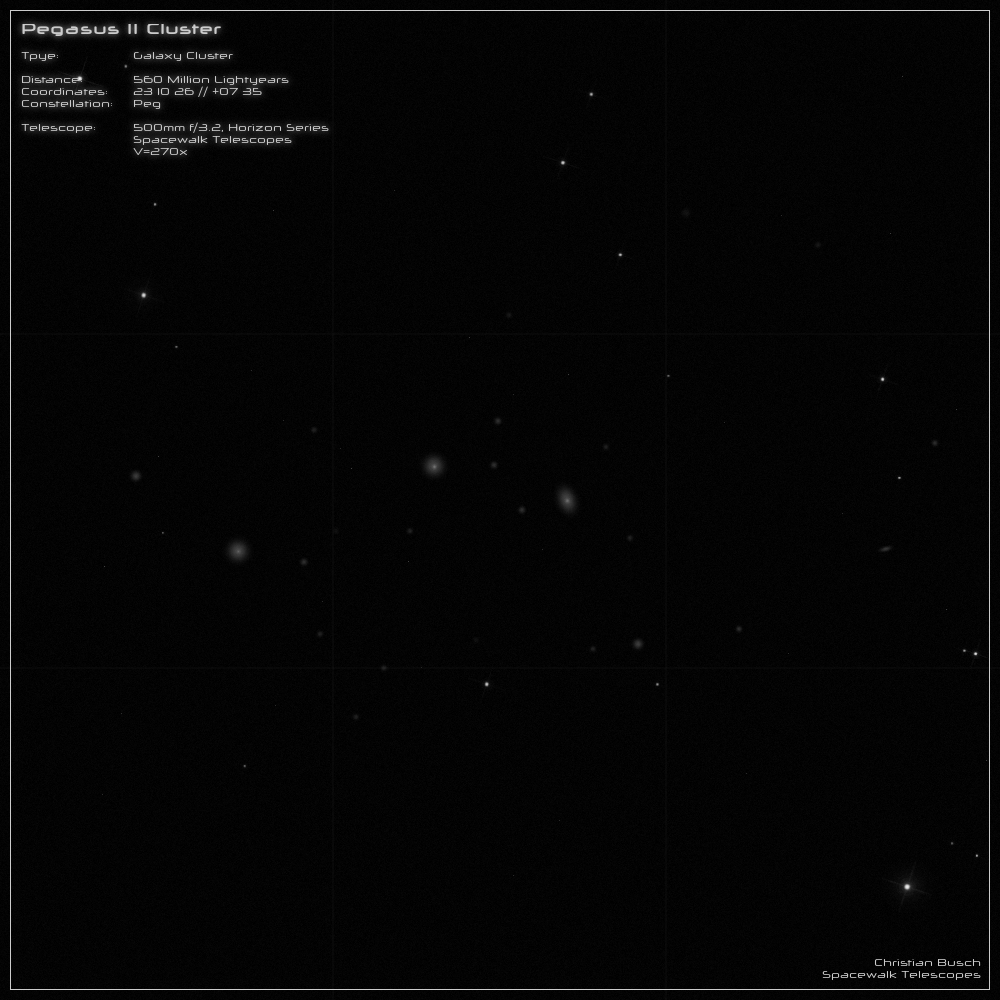Pegasus II Galaxy Cluster
The name "Pegasus II Galaxy Cluster" is actually not quite correct, because it is in fact located within the constellation Pisces. With a measured redshift
of z=0.039, it lies at a distance of about 560 million light-years and moves away from us by another 11,700 kilometers every second.
The galaxy cluster consists of three large galaxies and about 50 to 60 faint ones. The brightest have their own NGC numbers. NGC 7499 is the dominant member
of the cluster. It belongs to Hubble Type S0 and has a diameter of a whopping 185,000 light-years, as well as several star-forming regions. In 1986 a supernova
could be observed in the galaxy.
The other two large galaxies, NGC 7501 and 7503 belong to the group of elliptical galaxies and have diameters of 85,000 to 140,000 light years. In NGC 7503
also a supernova could be observed in 2001.
----------------------------------------------------------------------------------------------------------------------------------------------
The three largest galaxies appear quite bright in my 20 inch telescope and are easy to see at 270x. They appear quite featureless and show only a more or less
pronounced increase in brightness towards the center. The many small galaxies on the other hand were much more difficult to observe than expected, yet I was
able to pinpoint over 20 of them.
Since with less aperture probably only the three brightest galaxies are visible, this cluster is only interesting for telescopes with 18" aperture and larger.

